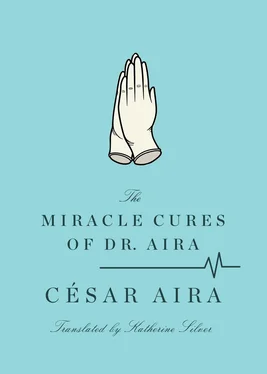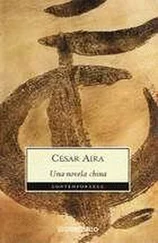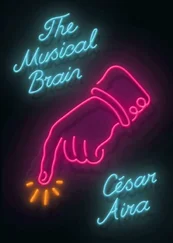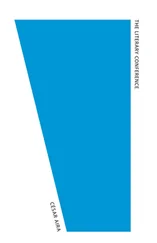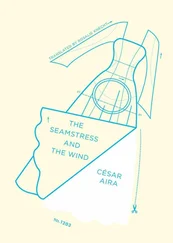At least he’d come out of it unscathed. His morning adventure was over. Once again, Dr. Aira had escaped from the clutches of his relentless archenemy and could continue (but for how much longer?) his program of Miracle Cures.
That winter, freed from the material necessities of life through a stroke of good fortune (he’d received a sum of money that had allowed him to take ten months off from his income-producing activities), Dr. Aira dedicated himself fully to the writing and publication of his works. His worry-free state could only be temporary because once the money ran out he would have to again find ways to get more; but for once in his life he wanted to give himself the chance to be fully absorbed in his intellectual work, like some kind of monk or wise man detached from the practical aspects of existence. If he didn’t do it now, at fifty, he never would.
One effect of his age was that he had lately begun to appreciate in all its magnitude the responsibility incumbent upon him as a creator of symbolic material (and who isn’t creating this, in one way or another, all the time?). Because this material was virtually eternal: it traveled through time and shaped future thoughts. And not only thoughts but also everything that would be born from them. The future itself, the block of the future, was nothing more than what was enclosed in and exemplified by these forms that emerged from the present.
Of course, the transformations the forms undergo during their voyage through time render their destinations fairly unpredictable. Work done in one field can end up exerting an influence on another, on any other, even the most distant and unrelated one. Hence, his efforts in the field of medicine could create, centuries later, new styles in fields as different from his own as astrophysics, sports, or fashion. But what importance does this have? The true cultivator of worlds sows his seeds in change itself, in the maelstrom. Be that as it may, the idea enveloped him in a daydream — innate to him, in fact — in which everything was transformed into everything else, through beautiful transitions like works of art.
Paradoxically, the opportunity that presented itself to him — because of the fact that it was an opportunity, particularly an opportunity to think, to elaborate his thoughts without stopping for practical considerations — brought with it an urgency for practical action, an urgency to make something. That’s what it was all about, because the other, theory, is what he had been doing his whole life, without the tyranny of necessity loosening its grip even for the few months he needed to transform theory into tangible objects. He was in the position of a poet who had written ten thousand poems and now had to seriously consider publishing them.
Things. Tangible things that could be held in a hand, placed in a drawer. The world was always praising “young people who make things,” and for good reason. Because ninety-nine percent of the value of things, of their intrinsic beauty, is derived from time. A comb is useful only for combing your hair (and not even this if you’re bald), but a two-hundred-year-old comb is sold as a precious object in an antique store, and a two-thousand-year-old comb is exhibited in a museum and is priceless. That’s why it’s worthwhile to make things in one’s youth, because these are the only things we have the possibility of seeing made more beautiful by the patina of time, if we live to an old age. Those we make later remain for future generations, and we miss out on them. Dr. Aira had missed the chance, and he bitterly lamented this fact. But to make things now, at fifty, might bring back some inkling of youth; perhaps it would place time on his side.
The first thing was to begin publishing his installments of the Miracle Cures. First of all, obviously, he had to write them. . But at the same time he didn’t need to write them because throughout the last few years he had filled an unbelievable number of notebooks with elaborations on his ideas; he had written so much that to write any more, on the same subject, was utterly impossible, even if he’d wanted to. Or better said, it was possible, very possible; it was what he had been doing year after year, in the constant “changing of ideas” that were his ideas. Continuing to write or continuing to think, which were the same, was equivalent to continuing to transform his ideas. That had been happening to him from the beginning, ever since his first idea. He had no other choice if he wanted to progress, for the subject was always the same: Cure through Miracles. His lack of dogmatism combined with his absolute conviction gave his mental elaboration on the subject a plasticity that held it in perpetual flux, which gave him an immeasurable relative advantage over the other miracle healers; on the other hand, it had prevented him from ever concretizing anything.
A related problem, which he had worked on laboriously, was his principled refusal to use examples. The established discourse in the genre was based on the exposition of “cases,” clinical cases, surprising cases, exceptional cases. . But since all cases were exceptional, even the most typical ones, any text written within that system was condemned to being merely a digression. It was assumed that one could end up with an exhaustive illustration of an idea through the strength of examples. But for the idea to have any value, other examples would have to be able to illustrate it, so how could one achieve anything exhaustive? Even worse, the method of using examples in itself imposed a hierarchy between the particular and the general, a situation that could not stand more wholly in opposition to the very essence of his system of cures.
In spite of this, he had to think of a form of exposition that would be attractive to the general public, and the tradition of using examples was too deeply rooted to avoid altogether. After mulling the issue over and over he had come up with a compromise solution: to put into effect a do-it-yourself-examples mechanism the reader would be in charge of. He would confine himself to one example, only one “case,” with which he would open the first installment (or rather number zero) and to which all the arguments would refer, thereby inverting the malevolent order of the general and the particular.
This passe-partout example had given him many headaches. Not its invention, which was easy, perhaps too easy, but rather the conviction that he would need to employ it. In order to avoid that ease, he stuck with the first one that popped into his head, and in the long run he had to admit that he had done the right thing. It was not a case in the strict sense of the word but rather a little fable, inspired by a pair of stretchy woolen gloves that were sold as “magic gloves”; he had a pair, which he wore when he went on strolls in the winter; their “magic” consisted of both of them being exactly the same, so either could be worn on the right or the left hand indistinguishably. In turn, all the pairs of gloves were the same, all one size, and they fit all hands, from a little girl’s to a truck driver’s; their adaptability, just like their trick of bilateral symmetry, was due to the elasticity of their knit, and therein lay all the magic. What he imagined was the existence of a unique pair of truly “magic gloves,” made out of thick red leather with angora fur lining — hence very thick — that would have the property of giving the hands that wore them (but only while they were wearing them) the sublime piano-playing virtuosity of an Arrau or an Argerich. . but they would be useless because one obviously cannot play the piano wearing gloves, and less so with such uncomfortable polar gloves. Hence, their miraculous charm would never coincide with any proof, and the underlying theory would be left untouched. Only by dint of useless miracles could one prevent a theory from degenerating into a dogma.
Читать дальше
